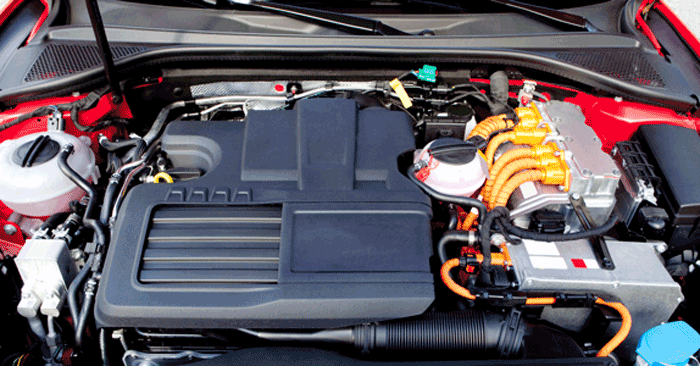The basics of hybrid vehicle should never be overlooked. Attempting to repair a standard hybrid vehicle can injury you for life or worst yet end your life. Follow these basic rules to properly repair today’s hybrid drivetrains.
“Hybrid vehicle technology may be in its infancy, but the field is growing rapidly. Every major auto and truck manufacturer is developing hybrids, and hybrid technology is a stepping-stone to advanced electric-drive components that will be used in both hydrogen fuel cell vehicles and pure electric vehicles. The complexity and sophistication of today’s hybrids are well above that of a normal car or truck.
Nowhere is this more evident than in a comparison of hybrid and non-hybrid electrical circuits. While a conventional vehicle’s electrical system is almost entirely driven by voltages of twelve to fourteen volts, today’s hybrid vehicle may produce five or more different circuit voltages, ranging from 12 to 650 volts. Both AC and DC currents are employed, and variable voltages are common.
Hybrids are designed to minimize the need to directly measure live high-voltage circuits. However, there will be times when the experienced hybrid vehicle technician will need to do just that. Although articles such as this can only supplement OEM service information, there are some general precautions that a professional technician should take when approaching a high-voltage circuit.
For the purpose of this article, high voltage is defined as circuit voltage of more than 50 volts. Although the high voltage (HV) systems of most hybrids do not normally need to be disabled when performing routine maintenance, HV systems must be shut down before high-voltage cables or components are disconnected or removed. For example, disconnecting HV components can be useful when diagnosing a hybrid vehicle’s ground fault. Such work requires the use of a milli-ohmmeter or insulation tester, which will be covered in a future article.
Potentially dangerous electrical currents can be produced or carried by any of four different types of hybrid components: (1) the high-voltage battery pack, (2) the capacitors inside the vehicle’s inverter-rectifier assembly, (3) the electric motor or motors, also known as motor-generators, and (4) the high-voltage cables, usually orange in color, that connect these essentials together.
One of the most common measurements of a hybrid vehicle’s high-voltage system is the voltage reading that is taken after disabling the system to verify that it has been properly shut down. Let’s walk through the generic steps that are normally required to establish that a hybrid’s HV system has been safely disabled.
Getting Ready
Direct measurements of potentially live high-voltage, high-current circuits require planning and focus. Although it is expected that little to no voltage will be encountered during…”
To read the full article CLICK HERE.
Image Source

